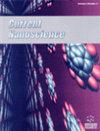Study on Measurement Method of Three-dimensional Position of Unlabeled Microspheres under Bright Background
IF 1.5
4区 材料科学
Q4 BIOTECHNOLOGY & APPLIED MICROBIOLOGY
引用次数: 0
Abstract
Abstract: Using computer vision technology to obtain the position and trajectory data of particle probe microspheres from microscope images has significance and value in the molecular field. However, most of the existing microsphere measurement methods are based on transmission, which can only be measured under transparent samples and substrates and are not suitable for the application scenario of living cell measurement. In this paper, a method based on reflectivity imaging is proposed to measure the three-dimensional position of the dark microspheres in the bright field. Based on the outermost ring radius method, the relationship between the inner ring radius of the microsphere spot and the out-of-focus distance was explored to measure the coordinates in the Z direction. Cardiomyocytes were combined with 10um size silica microspheres. Experiments show that in a bright field with a high perturbation environment, it can achieve high precision measurement of dark microspheres and achieve three-dimensional position measurement with an accuracy of 50nm in XY direction and 100nm in Z direction.明亮背景下未标记微球三维位置测量方法研究
摘要:利用计算机视觉技术从显微镜图像中获取粒子探针微球的位置和轨迹数据,在分子领域具有重要意义和价值。然而,现有的微球测量方法大多基于透射法,只能在透明的样品和底物下进行测量,不适合活细胞测量的应用场景。本文提出了一种基于反射率成像的暗微球在明光场中的三维位置测量方法。基于最外环半径法,探索微球光斑内环半径与离焦距离的关系,测量其Z方向坐标。心肌细胞与10um大小的二氧化硅微球结合。实验表明,在高摄动环境下的明亮场中,可以实现对暗微球的高精度测量,并实现XY方向50nm、Z方向100nm的三维位置测量。
本文章由计算机程序翻译,如有差异,请以英文原文为准。
求助全文
约1分钟内获得全文
求助全文
来源期刊

Current Nanoscience
工程技术-材料科学:综合
CiteScore
3.50
自引率
6.70%
发文量
83
审稿时长
4.4 months
期刊介绍:
Current Nanoscience publishes (a) Authoritative/Mini Reviews, and (b) Original Research and Highlights written by experts covering the most recent advances in nanoscience and nanotechnology. All aspects of the field are represented including nano-structures, nano-bubbles, nano-droplets and nanofluids. Applications of nanoscience in physics, material science, chemistry, synthesis, environmental science, electronics, biomedical nanotechnology, biomedical engineering, biotechnology, medicine and pharmaceuticals are also covered. The journal is essential to all researches involved in nanoscience and its applied and fundamental areas of science, chemistry, physics, material science, engineering and medicine.
Current Nanoscience also welcomes submissions on the following topics of Nanoscience and Nanotechnology:
Nanoelectronics and photonics
Advanced Nanomaterials
Nanofabrication and measurement
Nanobiotechnology and nanomedicine
Nanotechnology for energy
Sensors and actuator
Computational nanoscience and technology.
 求助内容:
求助内容: 应助结果提醒方式:
应助结果提醒方式:


